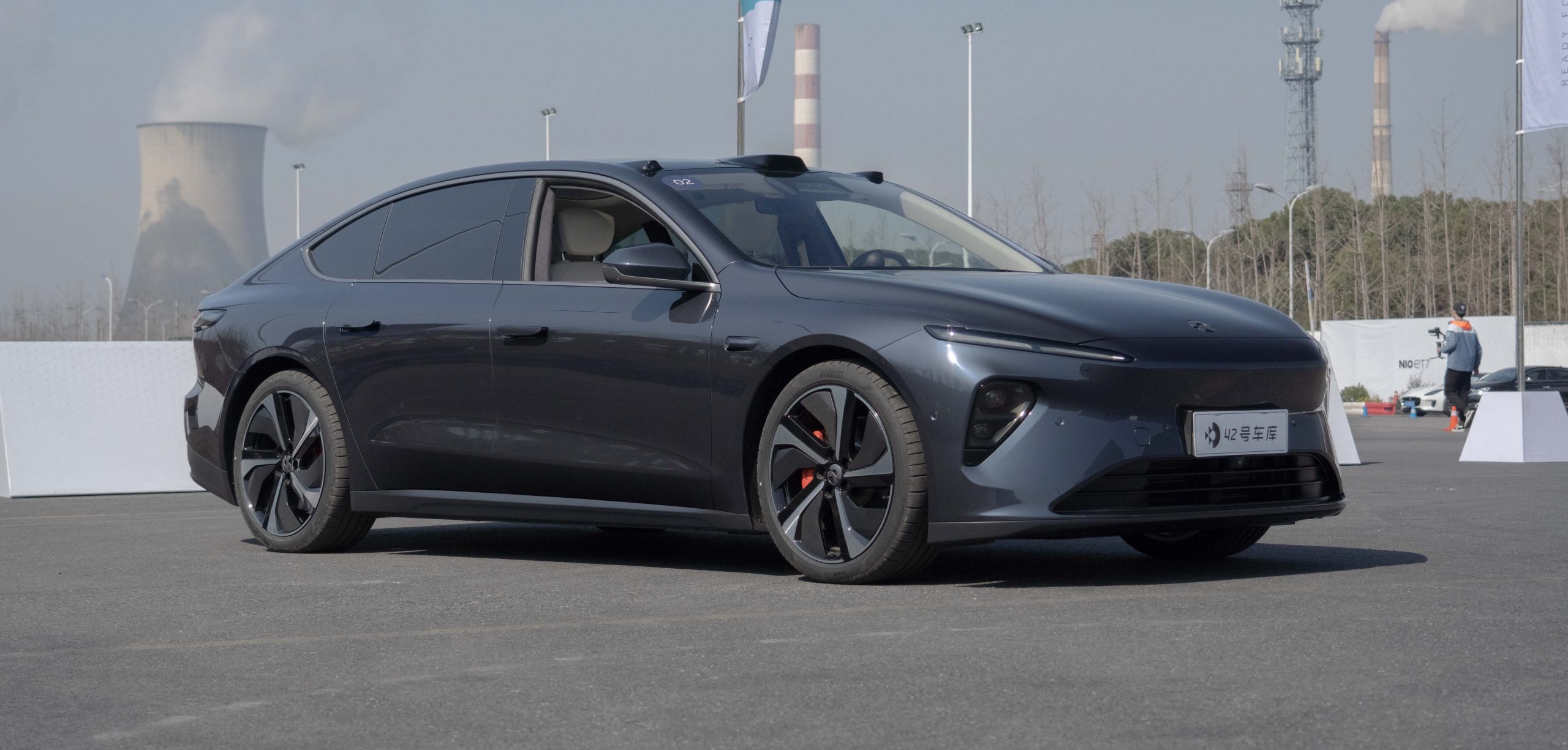NIO ET7: The Production Model with the Most Advanced Advanced Driving Assistance System (ADAS) Hardware
As the production model with the most powerful ADAS hardware configuration available to date, the actual driving performance of the NIO ET7 has always been highly anticipated. So, how capable is the ET7’s ADAS? Today, let’s take a look.
Hardware Specifications
First of all, let’s review its ADAS hardware specifications. The ET7 has a total of 33 perception hardware devices, including:
- 1 high-performance LiDAR
- 7 8-megapixel ADAS cameras
- 4 3-megapixel surround-view cameras
- 1 DMS camera
- 5 millimeter-wave radars
- 12 ultrasonic sensors
- 2 high-precision positioning units with V2X vehicle-to-everything communication
- 4 Orin chips (total computing power of 1,016 TOPS)
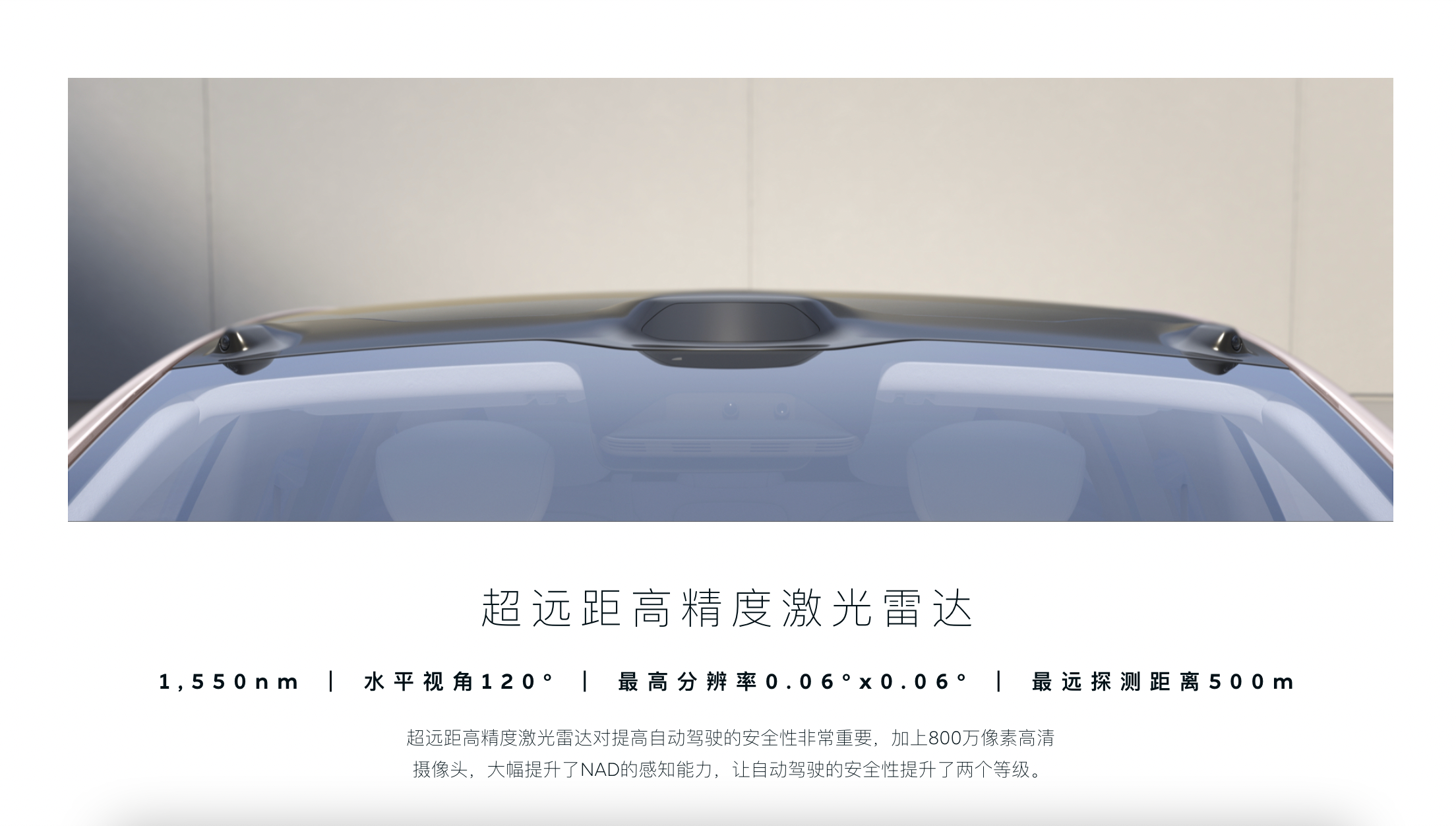

In terms of hardware configuration, the NIO ET7’s perception devices and chip computing power are far superior to the three models of the NT 1.0 platform. Additionally, starting with the ET7, NIO has completely abandoned supplier solutions and transitioned to comprehensive self-development.
With the previous 866 model, NIO had already pushed the Mobileye EyeQ4 chip’s computing power to its limit. Although the ADAS performance was significantly better than other models equipped with the same solution, it was still somewhat challenging to implement higher-level ADAS functions such as city NOP due to low computing power. Switching to the NVIDIA platform has removed the computing power constraints for NIO’s intelligent driving research and development.
ADAS Activation and Control
Unlike the 866 model, the NIO ET7’s NAD system comes standard with LCC lane-keeping and turn signal control functions, which can be directly activated in the ADAS settings. The 866 model only comes with adaptive cruise control, and the lane-keeping function needs to be purchased in conjunction with navigation-assisted driving for an additional fee of RMB 39,000.
Activating the ET7’s ADAS is the same process as the 866 model. Simply press the left side button on the steering wheel once to activate it. After successful activation, a blue halo will appear around the vehicle model on the instrument panel, indicating that the ADAS is activated, accompanied by a voice prompt.
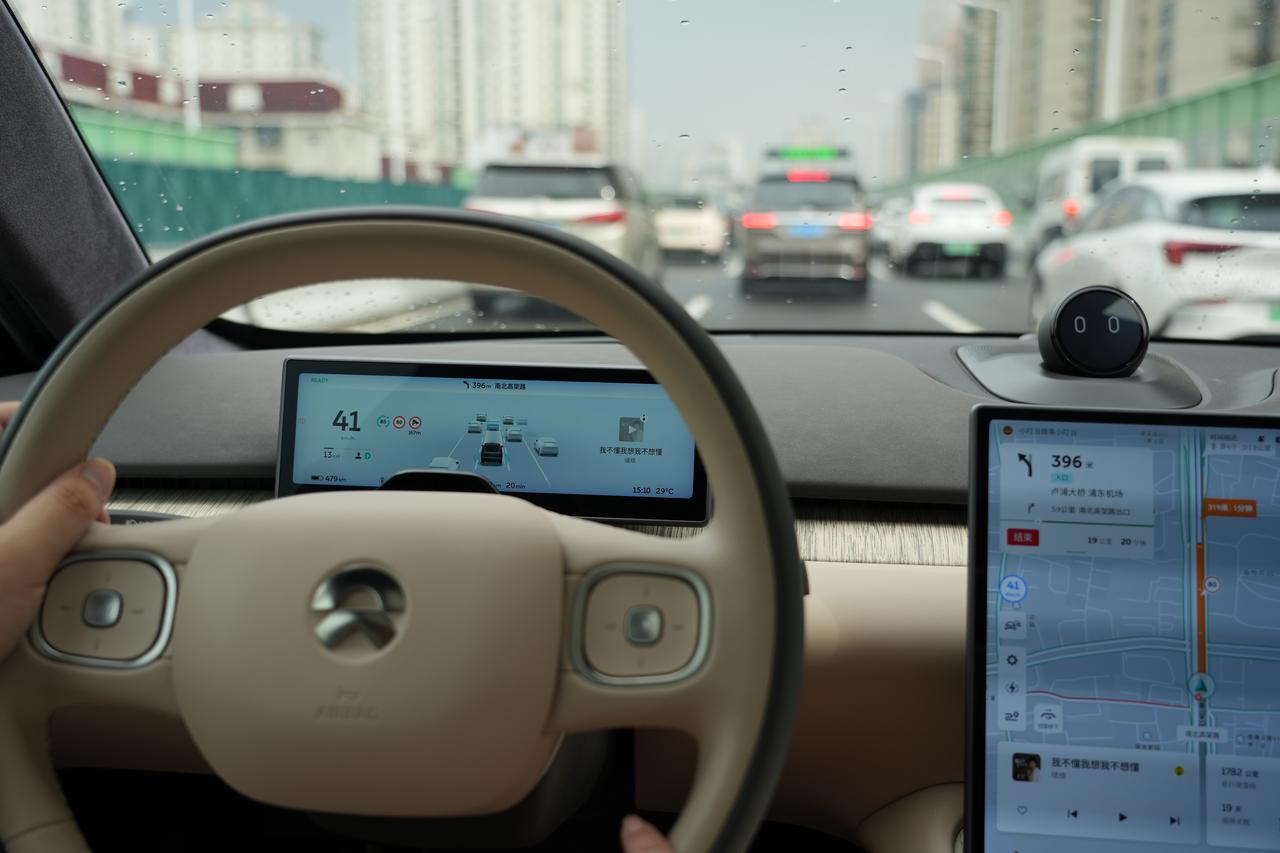 Below is the translated Markdown text from Chinese to English, with HTML tags preserved.
Below is the translated Markdown text from Chinese to English, with HTML tags preserved.
The up and down, left and right buttons on the NIO ET7 are used to adjust the distance between the car and the cruise speed. It’s worth mentioning that within the ET7’s infotainment settings, there are two types of speed adjustment methods to choose from: “short press 1 km + long press 5 km” and “short press 5 km + long press 1 km”.
The ET7’s LCC function can be engaged at 0 km/h, with a default minimum speed of 30 km/h.
Regarding the usage of the advanced driving assistance system, the ET7’s implementation is easy for even first-time users to understand.
Longitudinal Experience
The version of the software we tested on our ET7 was Banyan 1.0.1c CN. With this version, the lane-keeping performance is quite stable and rarely requires intervention, even with the minimum following distance setting, acceleration and deceleration control is still very smooth.
When a vehicle changes lanes in front of the ET7 at a close distance, the system will judge whether to slow down and avoid based on the pace of the preceding vehicle. The deceleration is also very linear, without any significant discomfort for passengers due to sudden braking.
In our tests, we found that with the minimal distance setting, the ET7’s shortest stopping distance is 3.76 meters, which is average. However, it only takes around 3 seconds for the vehicle to reach 0-20 km/h, making it difficult for other cars to cut in. In the face of vehicles trying to merge into its lane, the ET7’s recognition is exceptionally fast. As soon as the preceding car slightly crosses a line, the system can identify it and slow down to avoid.
Curve Performance
As per the 42Mark test model, we again set up three curves with different curvatures.
First is the devil’s curve. As the ET7’s hardware is powerful enough, we entered the curve at a speed of 52 km/h. While the vehicle recognized the turn and slowed down, it still crossed the left lane line and triggered a lane departure warning. After further deceleration, we successfully passed the curve.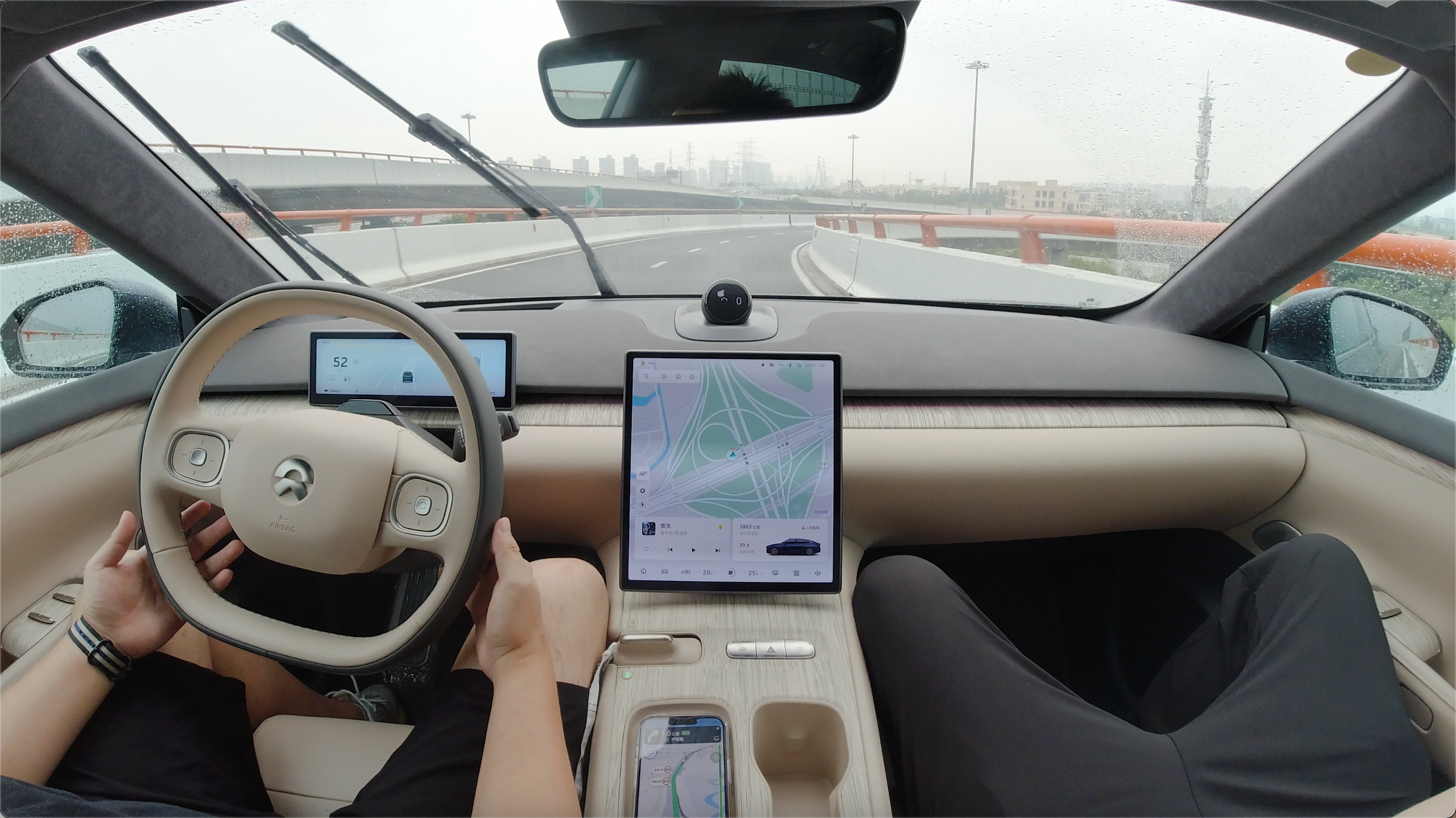
Before ET7, only Tesla Model 3 could smoothly merge into the main road on a bend. Therefore, ET7 not only has excellent lateral control ability, but also has the ability to cope with the changing scenario of lane merge.

However, the process of passing through the bend still exposed two issues. Firstly, the speed of passing through the bend is slow, with a speed of 32 km/h, which is lower than the road speed limit of 40 km/h, leading to dissatisfaction from vehicles behind. Secondly, during the process of passing through the bend, the entire vehicle is tilted towards the left side of the road, which may have some impact on the left lane vehicles on a two-lane ramp. Moreover, when turning out of the bend, it presses against the right lane line, indicating that there is still room for optimization in performance on a large curved bend.

Although the curvature of the S-shaped bend is not particularly large, the difficulty lies in the fact that the vehicle needs to first drive to the right and then to the left, which requires certain vehicle control ability. Under this scenario, ET7 performs relatively well. However, when turning out of the bend, the right lane line was obscured by mud and sand, causing the vehicle to recognize the lane line on the wall, leading to a slight deviation to the right. The entire bend was successfully passed with a speed of 45-50 km/h.
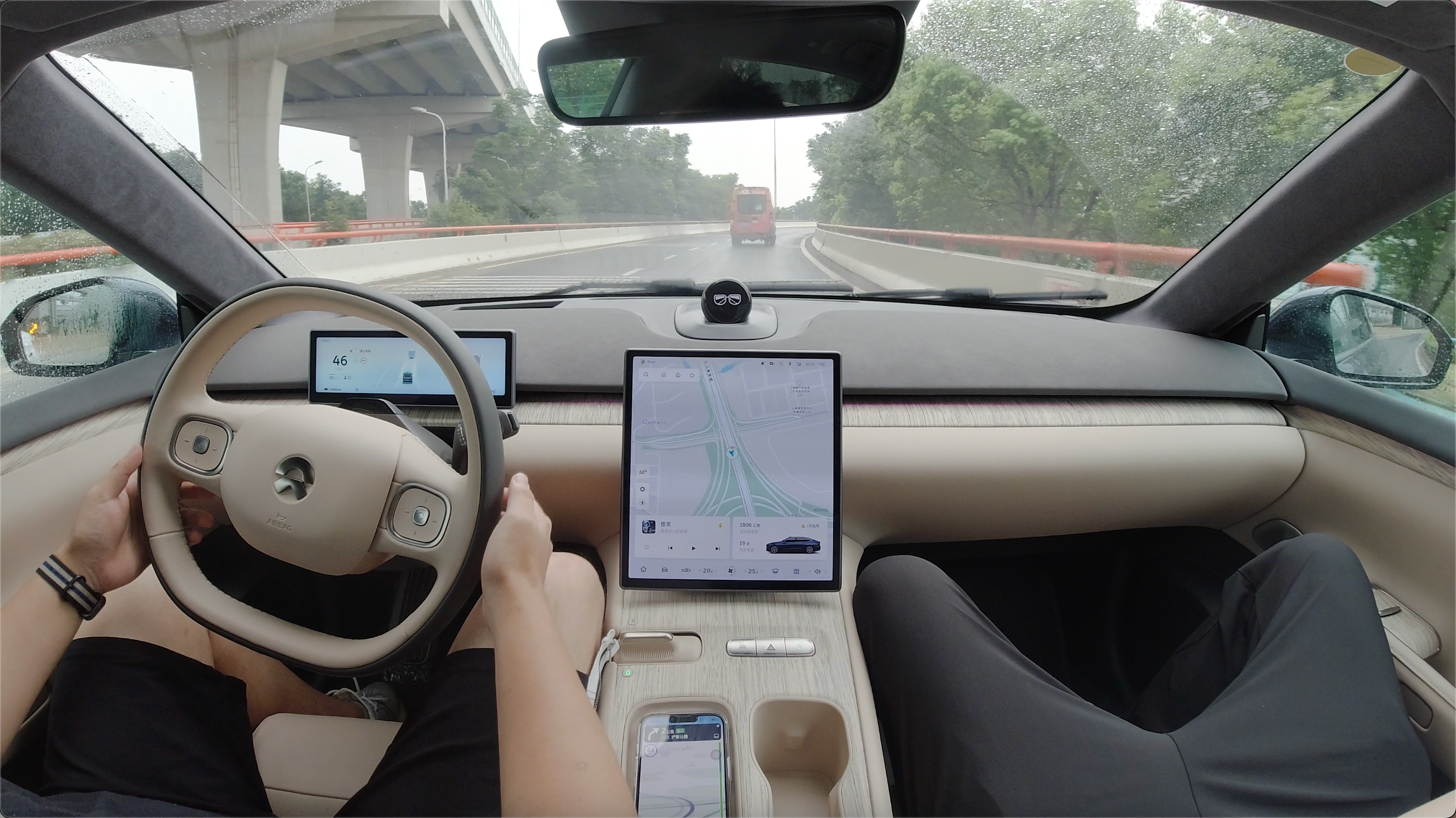
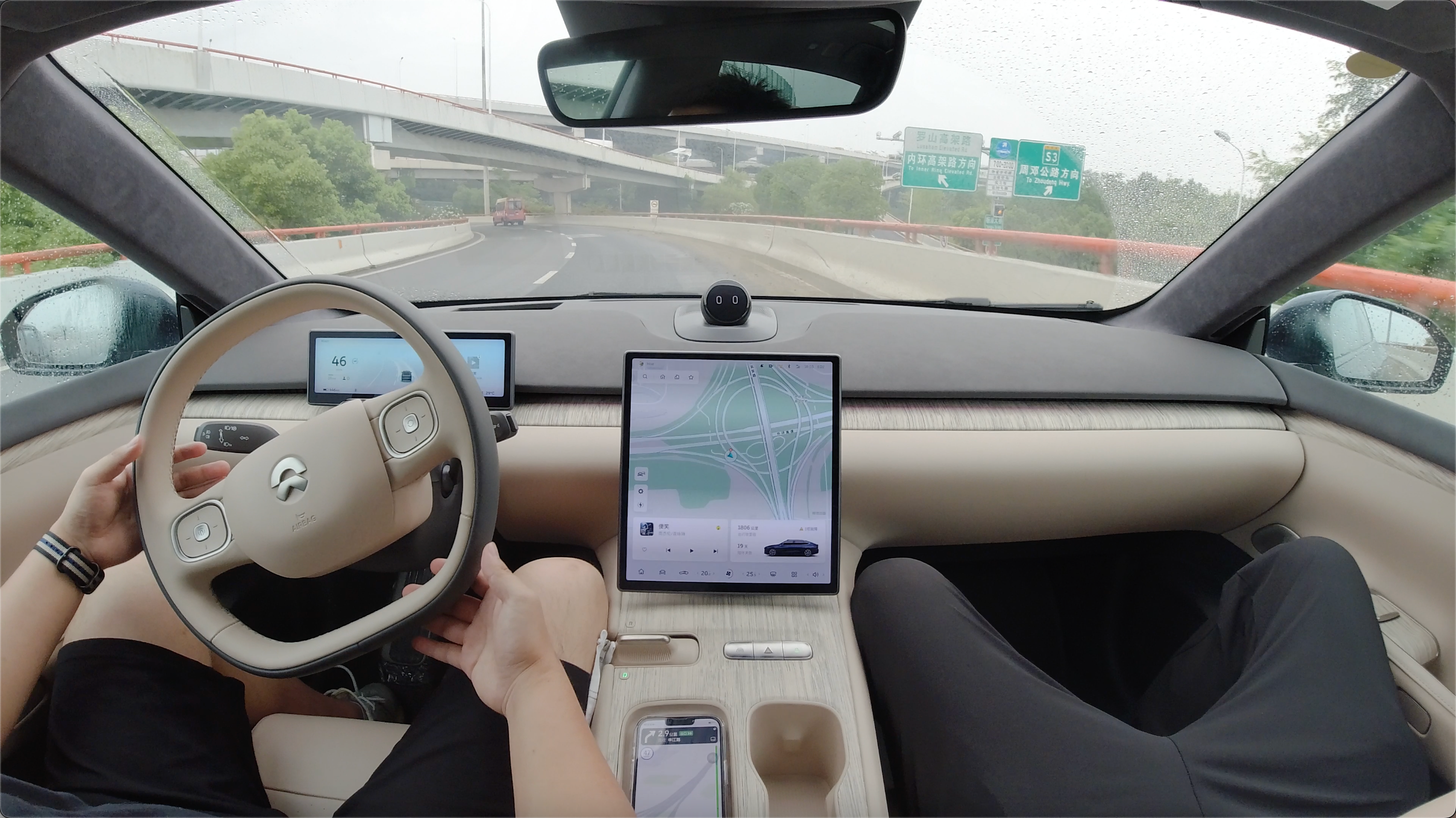
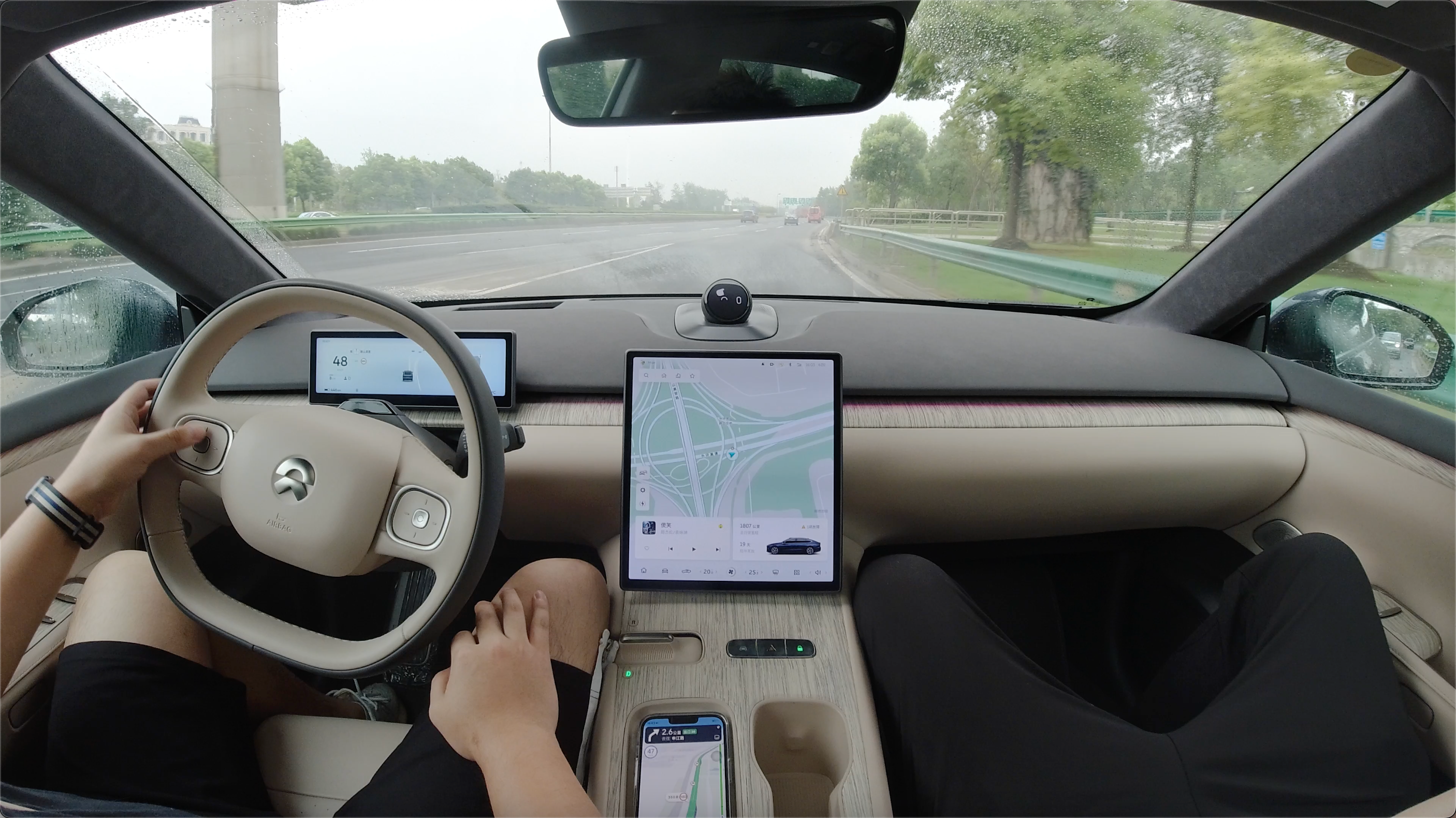
Ultimately, with regards to high-speed bends, ET7 has no problem at all and can easily pass through at a speed of 80 km/h.
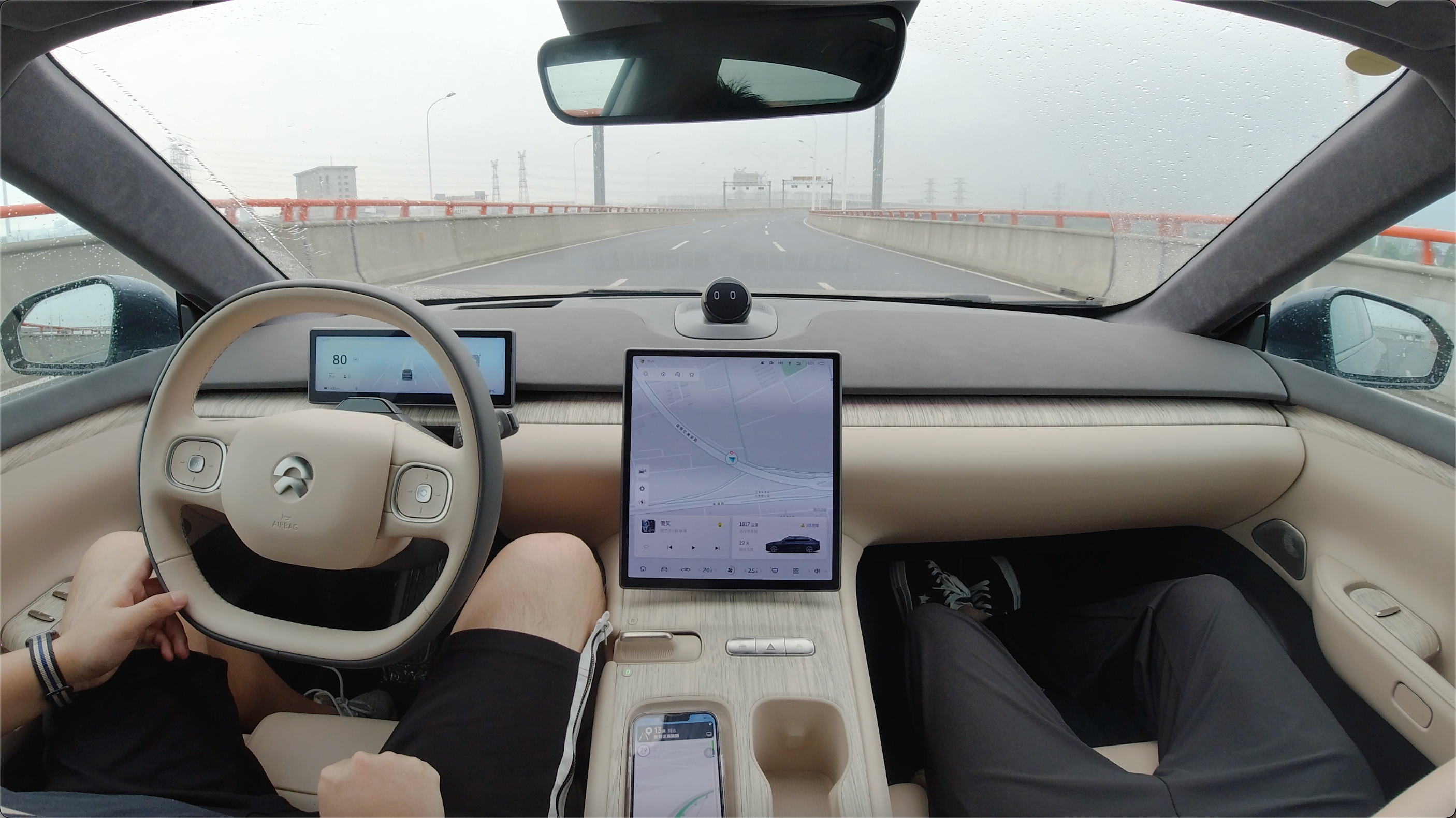
Overall, ET7 has strong bend handling capability, although there are some flaws in handling devil bends, it is still sufficient to deal with the majority of bend scenarios encountered in daily life. Compared with the previous 866 model, the handling capability has been slightly improved.
Turn Signal Experience
ET7 Lane Change Test
We encountered problems from the beginning of the ET7 lane change test. Despite no cars behind in the adjacent lane, when the driver turned the lever after holding the wheel, the instrument panel displayed “hold the steering wheel to start changing lanes.” During the test, the driver’s hands did not leave the steering wheel. We suspect this is a software bug in the unstable version.
After multiple attempts, the vehicle still could not complete the lane change. After using the “turn it off and on again” method, the software of the vehicle returned to normal. After testing, we found that there are two different ways the ET7 signals and executes the lane change maneuver.
When the driver partially turns the steering lever, the vehicle can respond and execute the lane change immediately. However, if the driver turns the lever all the way, the vehicle will wait for 0.5-1 second before initiating the lane change.
In both states, the front and rear of the vehicle are relatively empty. Even after repeated testing, the system has not explained these two different states. When using lane change for the first time, owners of the vehicle may find this calibration strange.
In terms of lane change speed, ET7 is very close to Model 3. But in terms of ride comfort, ET7 does not provide the feeling of being dragged when changing lanes as Tesla does.
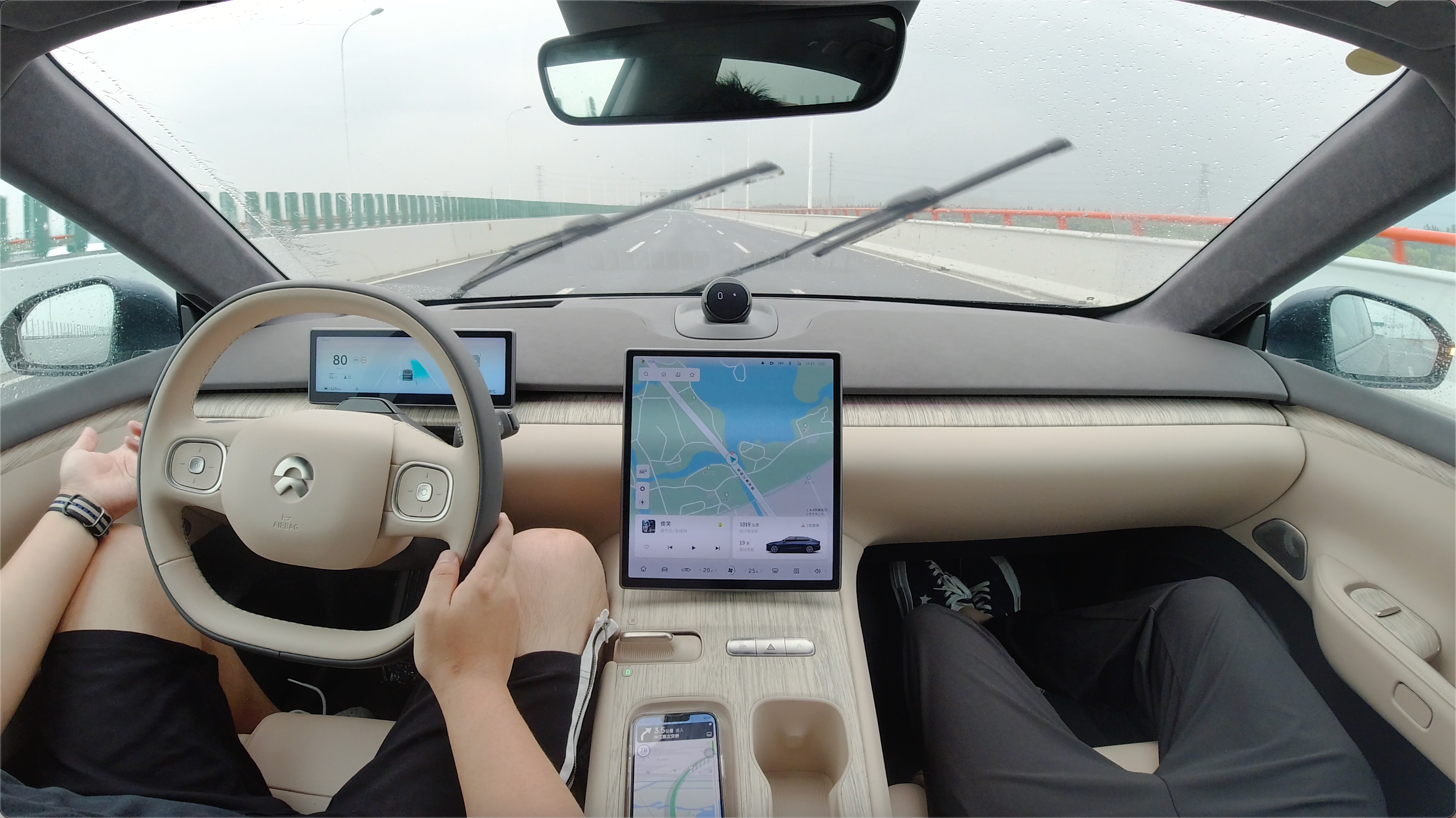

During our testing, ET7 can use lane change as long as the vehicle speed reaches 30 km/h. This speed provides high availability, and the lane change function is easy to use even in urban roads, which is very close to human driver experience.
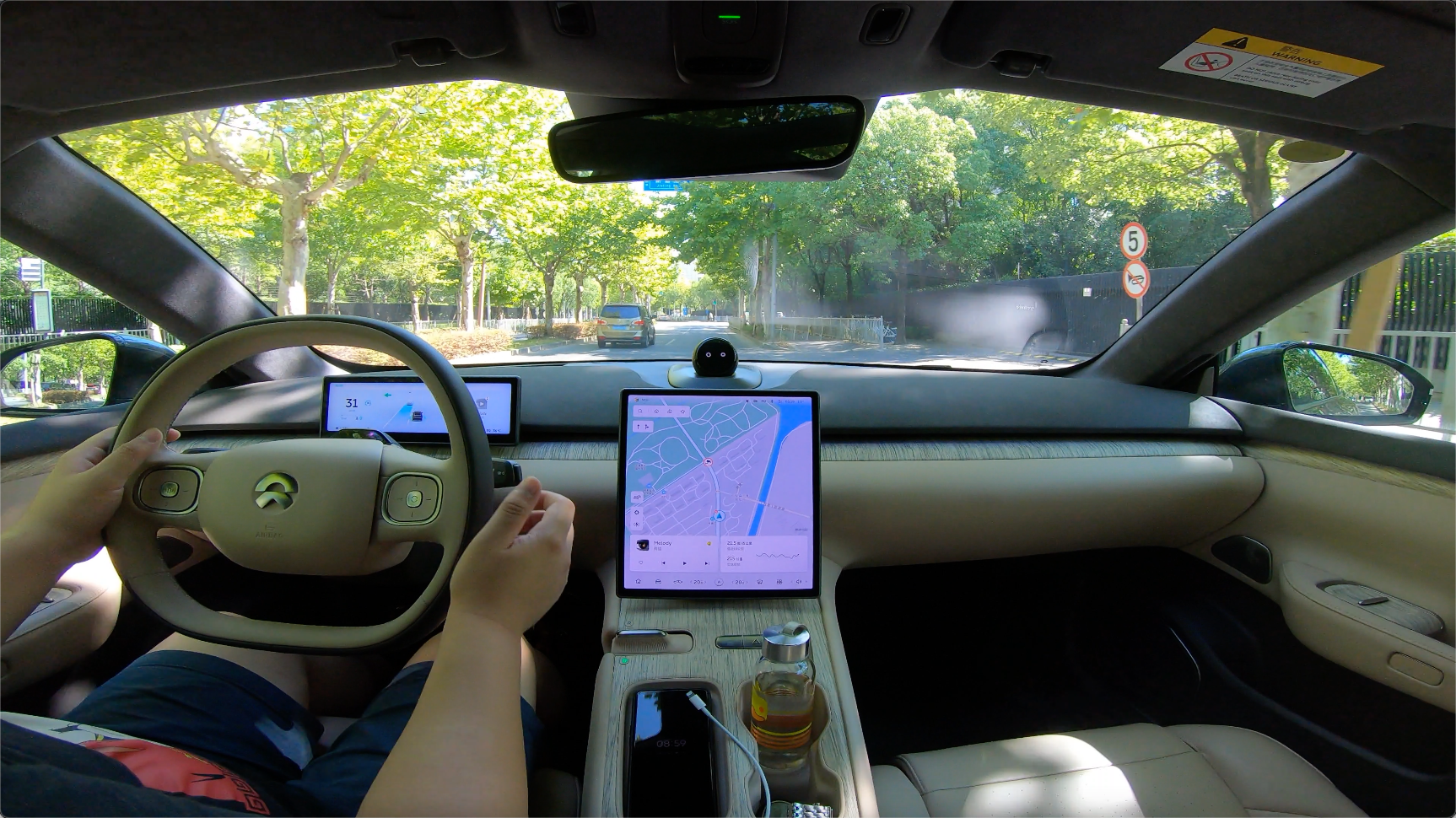
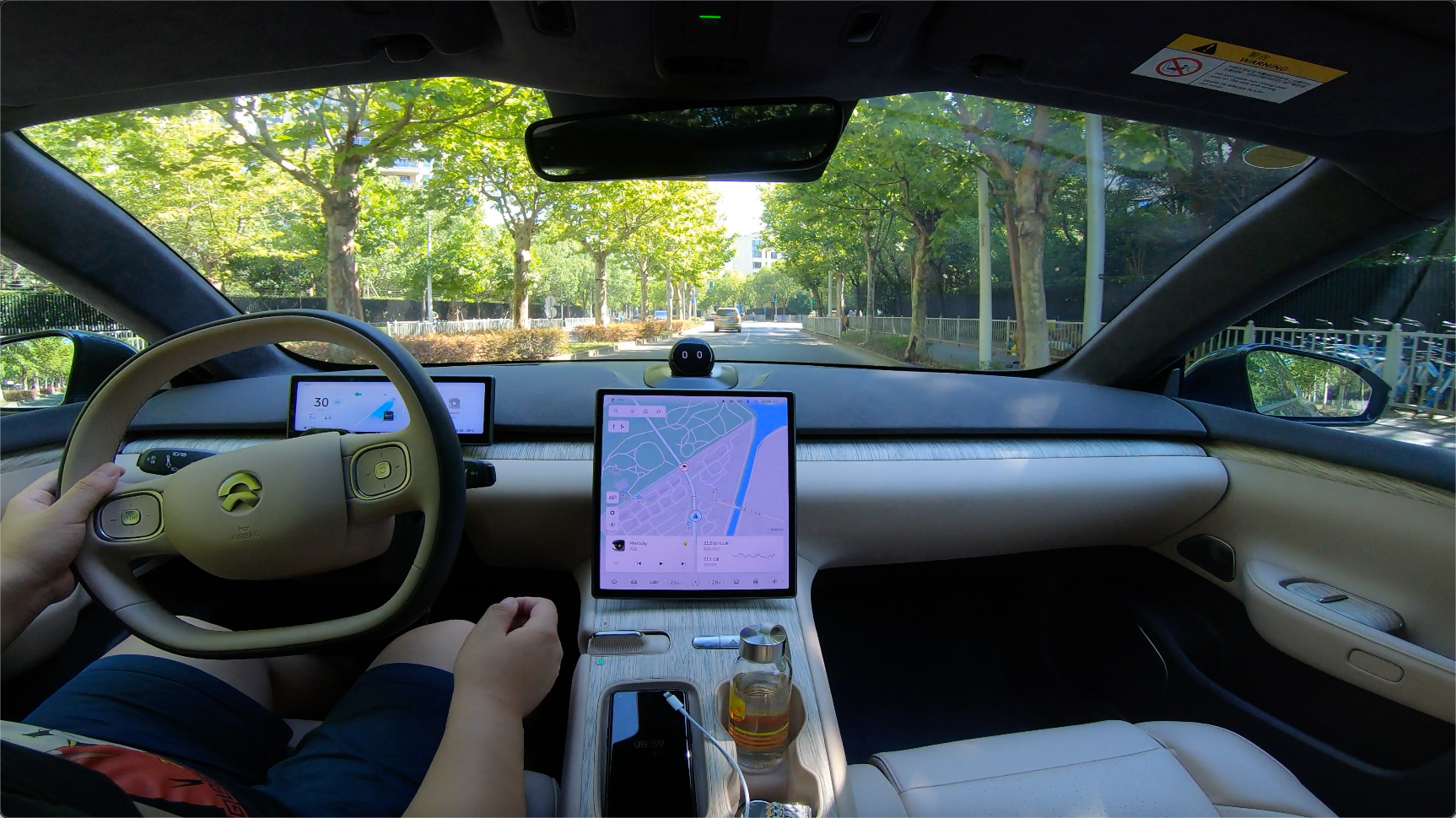
ET7’s rear car detection is very long. Even when the following car is three car lengths away or more, as long as its speed is faster than ours, ET7 will not execute a lane change.
Other details related to assisted driving
ET7 continues the human-machine co-driving strategy of the 866 model. When the car is in lane keeping mode, if the driver forces the wheel to turn, the vehicle will enter the ACC adaptive cruise mode. When the vehicle recognizes that the driver is no longer controlling the steering wheel and recognizes the lane line, it will re-enter the LCC mode. Compared to other models, this is much more convenient, as some require manual reactivation of the lane keeping mode.ET7 has the function of recognizing and avoiding large trucks. While keeping the lane open, if the vehicle detects a large truck in the adjacent lane, it will actively drive towards the other side lane to keep a safe distance and reduce the driver’s psychological burden.
In terms of driver state monitoring, ET7 finally abandons the torque sensor on the 866 and uses a capacitive steering wheel and a DMS camera to monitor the driver’s line of sight on the road. Drivers no longer need to keep adjusting the steering wheel, and this also prevents situations where excessive force on the steering wheel causes the lane keeping to fail or the vehicle to deviate from the driving lane, thus enhancing the safety of assisted driving.
After the integration of LiDAR into ADAS, the perception capabilities of NIO ET7 have been greatly enhanced, and the forward detection distance has also been significantly improved. First, the visual distance of ET7 has become very far, providing higher safety redundancy for high-speed driving. Second, the visualization display has markedly improved, which greatly boosts the driver’s confidence.
However, the difference between opening and not opening the basic assisted-driving feature of ET7 is not clear enough. Drivers can only tell that the assisted-driving has been enabled through the blue circle around the vehicle and the blue change of the lead car’s model. This is less intuitive than Tesla and XPeng, which turn both side lane markings blue, and XPeng also labels the LCC status at the navigation arrow position in the central control.
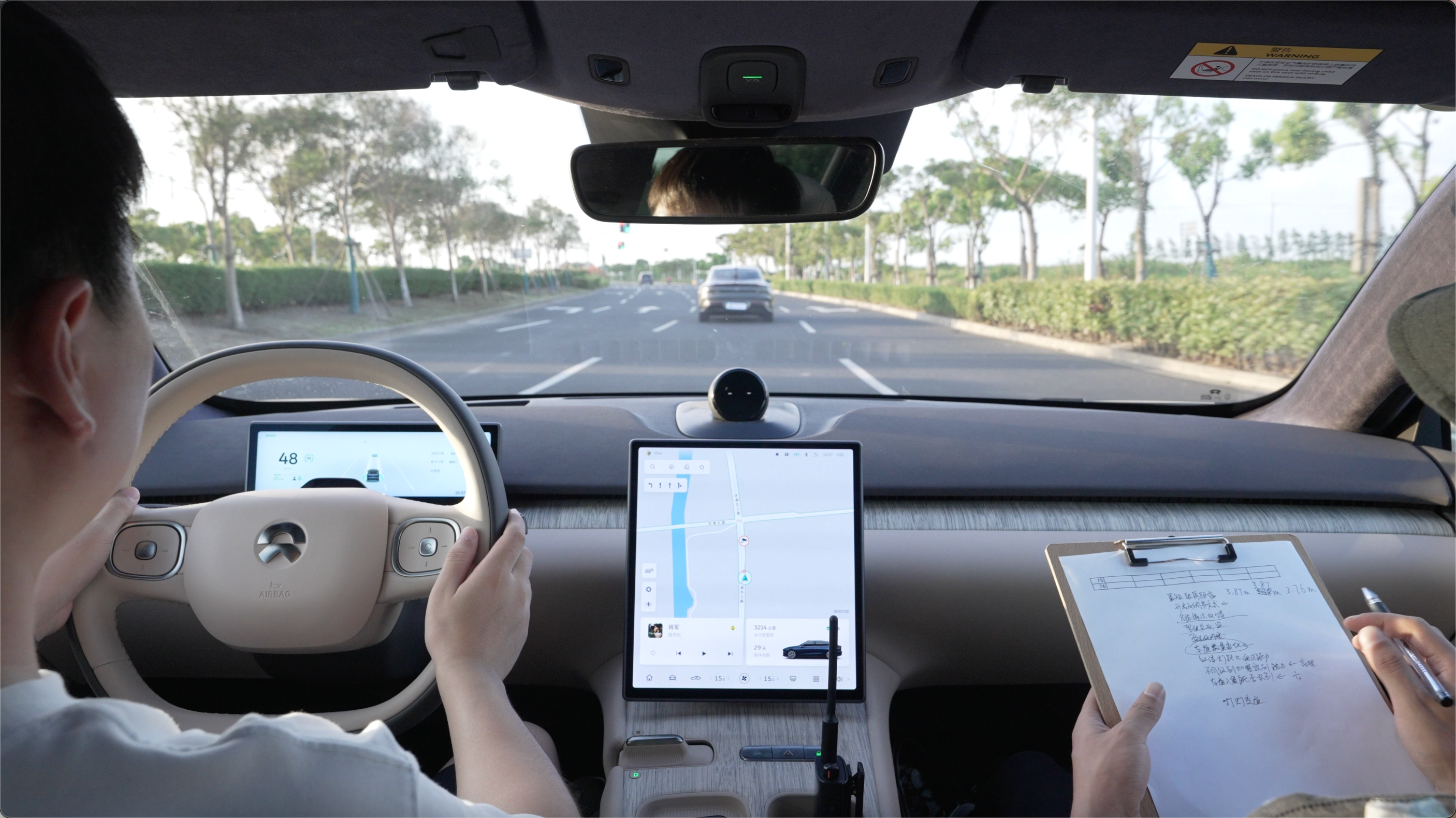
Conclusion
The powerful hardware of ET7’s assisted-driving system gives us confidence even before testing, and its actual performance lives up to our expectations.
In most scenarios, ET7 demonstrates strong basic capabilities, with only some room for improvement in cornering. We are also looking forward to the surprises that a fully unleashing the potential of ET7’s hardware after future OTA updates.
This article is a translation by ChatGPT of a Chinese report from 42HOW. If you have any questions about it, please email bd@42how.com.
